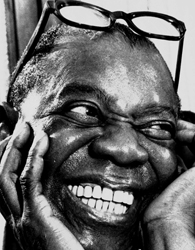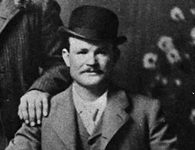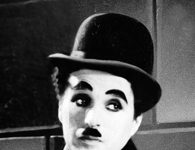“Louis Armstrong is jazz,” said Wynton Marsalis. “He represents what the music is all about.” Armstrong was an innovative jazz musician who not only propelled the growth of jazz as a genre, but also put the music into the pop culture limelight. He traveled throughout the United States and abroad, sharing his deft trumpet playing and distinctive voice with his many devoted fans.
Louis Armstrong’s Early Days
Louis Armstrong was born in New Orleans on August 4, 1901. Art historian Marc Miller says Armstrong was “a hard-working kid who helped support his mother and sister by working every type of job there was, including going out on street corners at night to sing for coins.”
He bought himself a cornet when he was only 7, but had no formal music lesson until age 11, when he was sentenced to the Jones Home for Colored Waifs for firing a pistol during a New Year’s Eve celebration.
Released 18 months later, he began supporting himself as a working musician. Armstrong was mentored by Joe “King” Oliver, one of the musicians who was developing a new genre of music that would come to be known as jazz. It was Oliver who brought the young musician to Chicago, but Armstrong went from there to New York. When he came back to Chicago in 1926, he was already becoming famous.
Sources in this Story
- Smithsonian Institution: National Portrait Gallery: Louis Armstrong: A Cultural Legacy
- Allmusic: Louis Armstrong Biography
- PBS: American Masters: Louis Armstrong
- Louis Armstrong House Museum
- All About Jazz: Ambassador Satch in Philadelphia
Armstrong’s Notable Accomplishments
By February 1927, Armstrong had garnered enough credibility to front “Louis Armstrong and His Stompers.” A string of chart-topping hits ensued as Armstrong headlined different bands and worked with a variety of musicians. He began touring the United States and in the 1930s, started appearing in movies.
“Louis Armstrong was embraced by two distinctly different audiences: jazz fans who revered him for his early innovations as an instrumentalist, but were occasionally embarrassed by his lack of interest in later developments in jazz and, especially, by his willingness to serve as a light entertainer; and pop fans, who delighted in his joyous performances, particularly as a vocalist, but were largely unaware of his significance as a jazz musician,” writes William Ruhlmann for Allmusic.
Armstrong had been a trumpet player for most of his career, but in the 1950s, he started to become famous for his singing. “His rough and throaty voice became, almost instantly, the internationally recognized voice of jazz itself,” says PBS’ “American Masters.”
Among the many inventive and legendary jazz musicians, Armstrong stands out as one of the most influential, not just because of his exceptional and inspiring talents, but also because of his “formal innovations.” His duets with other jazz greats such as Ella Fitzgerald are particularly memorable. Armstrong was earned the nicknames “Pops” or “Satch” (said to be short for satchel mouth) with his friends and fans.
The Man and His Work
- “The Ultimate Collection: Louis Armstrong”
- “The Essential Louis Armstrong”
- “The Hot Fives & Sevens”
- “What a Wonderful World”
The Rest of the Story
Armstrong’s home in Queens, where he lived with his wife Lucille from 1943 until his death on July 6, 1971, is now a museum, and Queens College houses his archive. On the Official Site of the Louis Armstrong House and Archives, you’ll find information about exploring the archive and can listen to a collection of audio clips. There’s also information about current news related to the archive and Armstrong. His house is now a landmark, and information about visiting it is also available.
In 2003, Philadelphia’s Prince Music Theater produced “Ambassador Satch,” which recounted Armstrong’s life in musical form. Armstrong got the nickname “Ambassador” from his numerous international tours, and specifically during a trip he made to Africa. The play covers all aspects of his life; unfortunately, lead actor Andre De Shields could not match the considerable talent of the real Armstrong. A reviewer wrote, “The band is not the ‘hot five’ and this not Louis alive. It is, however—largely due to the performers, direction, choreography and Mr. De Shields’s daring emulation of Louis—a lot of fun.”
This article was originally written by Rachel Balik; it was updated July 5, 2017.











